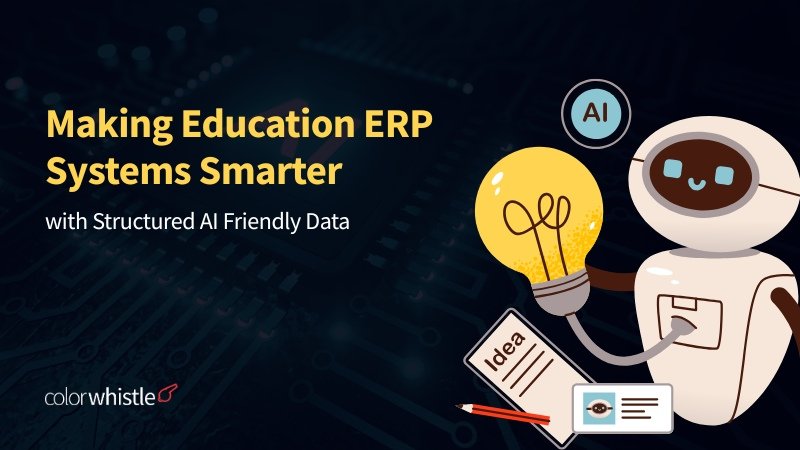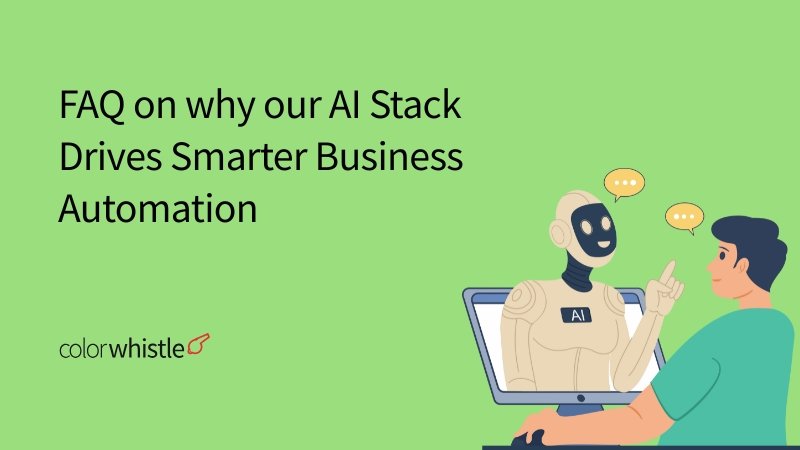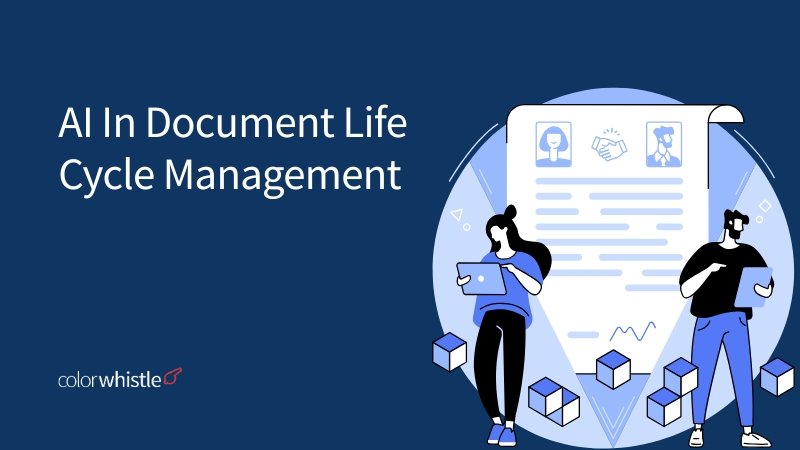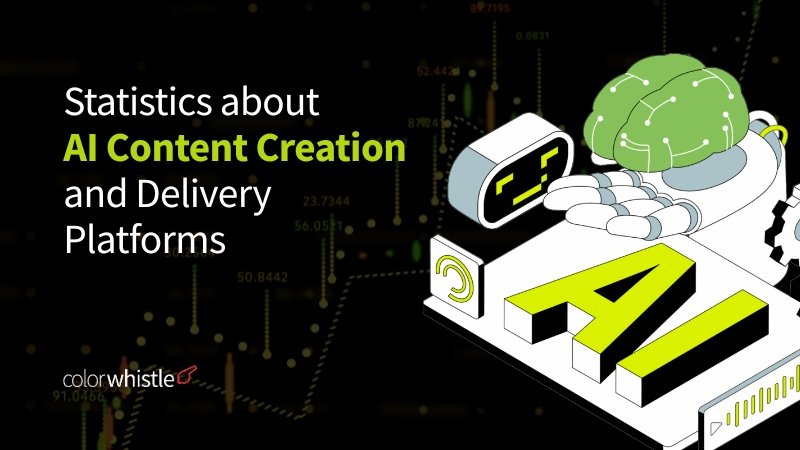Education ERP (Enterprise Resource Planning) systems are essential for today’s educational institutions, serving as a digital backbone that integrates and streamlines key administrative and academic operations.
These platforms consolidate various functions, including finance, human resources, student information management, admissions, procurement, and academic scheduling. By doing so, they empower schools, colleges, and universities to operate more efficiently and with greater visibility.
Making Education ERP Systems Smarter with Structured AI-Friendly Data is a strategic imperative for institutions seeking to leverage technological advancements in school automation. Structured data organized in defined formats,lays the foundation for seamless AI integration within ERP systems.
This approach enables educational organizations to:
- Automate routine tasks
- Gain predictive insights
- Deliver data-driven decision-making that supports both operational excellence and improved educational outcomes
Key topics addressed in this article:
- The nature of data within Education ERP systems and the necessity of structured formats
- The role of structured AI-friendly data in driving smarter automation
- AI technologies empowering next-generation Education ERPs
- Real-world applications enhancing academic data management and automating financial processes
- Tools, platforms, and best practices for successful AI integration
- Future trends shaping the evolution of intelligent school management systems
Embracing structured data and advanced AI capabilities positions educational institutions at the forefront of digital transformation—enabling them to meet evolving demands with agility and precision.
Understanding Data in Education ERP Systems
Education ERP systems are essential for managing various types of data in educational institutions. Each department within a school or university has its own specific data needs, which, when properly organized, lead to smoother operations and better decision-making.
Key Types of Data in Education ERP Systems
Academic Data
- Student academic records: grades, transcripts, attendance logs, standardized test scores
- Course information: schedules, syllabi, curriculum maps, faculty assignments
- Assessment data: exam results, project submissions, formative feedback
Financial Data
- Transactions: tuition payments, scholarships, grants, financial aid disbursements
- Budgeting and forecasting: departmental budgets, expenditure tracking
- Procurement: purchase orders, vendor invoices, and inventory management
Student Interactions
- Enrollment and admissions: application statuses, interview notes
- Communication records: emails with faculty or administration, help desk tickets
- Co-curricular engagement: club participation logs, event registrations
Human Resources Data
- Staff profiles: employment history, certifications
- Payroll and attendance: time sheets, leave balances
Operational and Facility Data
- Resource scheduling: classroom bookings, lab usage statistics
- Maintenance logs: equipment repairs, facility inspections
Importance of Structured Data Organization
Organizing these diverse data streams into structured formats, such as relational tables with defined columns for each attribute, lays the groundwork for robust management and analytics:
- Consistency: Standardized schemas reduce ambiguity and enable seamless integration between modules (e.g., linking student financial aid directly to enrollment records).
- Accessibility: Well-structured data supports efficient querying and reporting; administrators can extract insights without manual reconciliation or data cleaning.
- AI Compatibility: Structured academic data and financial data are especially valuable for AI-driven applications such as forecasting enrollment trends or flagging anomalous transactions.
- Compliance: Regulatory requirements around student privacy (e.g., FERPA) are easier to enforce when information is systematically categorized.
“A well-designed ERP not only captures transactional details but transforms them into actionable intelligence through structure and connectivity.”
Educational institutions equipped with meticulously organized data are positioned to unlock the full potential of advanced analytics and intelligent automation,a foundation crucial for the next wave of AI integration in ERP platforms.
The Role of Structured AI-Friendly Data in Enhancing Education ERPs
Understanding Structured AI-Friendly Data
Structured data refers to information organized in a fixed format with defined rows and columns, often stored in relational databases or data warehouses. In the context of Education ERP systems, structured AI-friendly data includes:
- Student Records: Names, IDs, grades, attendance.
- Course Schedules: Timetables, classroom allocations.
- Financial Transactions: Budget allocations, fee payments.
- HR Information: Staff details, payroll data.
This type of data is inherently easier to manage and analyze using AI technologies due to its consistency and predefined organization.
This digital transformation often begins with a well-designed education website, which serves as an effective platform for communication and information dissemination.
Benefits of Using Structured Data for AI Applications
Utilizing structured AI-friendly data within Education ERP systems offers several advantages:
Enhanced Predictive Analytics:
- Machine learning models can forecast student performance trends based on historical academic records.
- Financial forecasting becomes more accurate by analyzing past transactions.
Improved Operational Efficiency:
- Automated scheduling tools can optimize course timetables using structured data inputs.
- HR management processes such as recruitment and payroll can be streamlined through AI-driven automation.
Accurate Insights and Decision-Making:
- Structured data allows for clear visibility into institutional performance metrics.
- Decision-makers can rely on precise data analysis for strategic planning.
Reduced Human Error:
- Structured formats minimize the risks associated with manual data entry.
- Consistent data structures support reliable automation processes.
Enhanced Security Measures:
- Anomaly detection algorithms can identify inconsistencies or suspicious activities in financial transactions.
Moreover, the integration of AI-powered website Maintenance can further enhance the efficiency of Education ERP systems. Such maintenance ensures that educational websites remain fast, secure, and accessible.
Structured AI-friendly data is fundamental for maximizing the potential of AI applications in Education ERP systems. By leveraging this organized information alongside AI App Development Services, educational institutions can achieve substantial improvements in efficiency, accuracy, and overall management capabilities.
Furthermore, incorporating Webflow into the design process can significantly enhance user experience by creating engaging and effective educational websites that are tailored to meet student needs.
AI Technologies Empowering Smarter Education ERP Systems
AI technologies are at the core of transforming education ERP systems from static data repositories into dynamic, intelligent platforms. Each major AI discipline contributes unique capabilities to school management, accelerating processes and unlocking new value from structured data.
1. Machine Learning (ML)
Machine learning algorithms harness large volumes of structured data in ERPs to deliver predictive analytics and automated decision support. By analyzing historical student performance, attendance, and engagement metrics, ML models forecast at-risk students or project future enrollment trends. These insights enable proactive interventions, resource allocation, and academic planning, strengthening institutional decision-making.
Also Read
2. Natural Language Processing (NLP)
NLP brings human-like understanding to text-heavy processes within education ERPs. Features such as automated grading of essay-type answers, text summarization for student feedback, and intelligent search across academic records streamline administrative burdens. Virtual assistants powered by NLP respond to staff, parents, or students’ queries about schedules, grades, or fees, improving communication efficiency while reducing manual workload.
3. Robotic Process Automation (RPA)
RPA automates repetitive back-office tasks that previously consumed valuable staff time. Examples include:
- Automated processing of fee payments and invoice generation.
- Data migration between legacy systems and modern ERPs.
- Scheduling email notifications for due dates or policy updates.
These rule-based bots work seamlessly with structured data formats in ERPs, ensuring accuracy and freeing personnel for higher-value activities.
4. Generative AI
Generative AI introduces adaptive content creation within educational settings. Applications include:
- Auto-generating personalized study materials based on syllabus coverage.
- Producing scenario-based training modules for faculty professional development.
- Simulating enrollment or budget planning events for leadership teams.
Education ERP AI initiatives leveraging these technologies capitalize on the integrity and consistency of structured data, making education ERP systems smarter with structured AI-friendly data at every operational level.
By integrating these technologies, institutions not only drive operational efficiency but also foster a culture of innovation that adapts to evolving educational needs.
Enhancing Academic Data Management with AI Integration
Modern education ERP systems are uniquely positioned to elevate academic data management through AI-driven capabilities. Using structured data that is compatible with AI, institutions can transform the way they monitor academic performance and improve courses, directly supporting educational excellence.
Academic Performance Tracking
AI algorithms can analyze large amounts of data such as attendance records, grades, and assessment results,to identify patterns and trends in student achievement. This enables:
1. Early Warning Systems
Machine learning models can detect risk factors for academic underperformance, such as declining grades or irregular attendance. Automated alerts will notify educators and advisors, allowing them to intervene promptly.
2. Personalized Learning Recommendations
By examining individual learning paths, AI can suggest tailored resources or remedial activities based on each student’s strengths and weaknesses.
Example
At a large urban school district, implementation of an AI-powered analytics module within the ERP system led to a 15% reduction in dropout rates. The system continuously monitored academic performance metrics and flagged students needing support, enabling proactive engagement by counselors.
Course Optimization
AI goes beyond tracking to actively recommend improvements in course design and delivery:
1. Curriculum Adjustment
Predictive analytics can highlight which topics or teaching methods yield the best outcomes across diverse student populations. Administrators can refine curriculum content based on real-time feedback.
2. Resource Allocation
Intelligent scheduling tools can optimize classroom assignments and faculty workloads by forecasting demand for specific courses or programs.
Case Study
A private university leveraged natural language processing (NLP) to analyze open-ended student feedback captured through its ERP portal. The insights revealed recurring issues with specific course modules. As a result, faculty adjusted content delivery methods mid-semester, leading to improved student satisfaction scores.
Enhanced Data Integrity and Accessibility
AI-driven validation tools automatically check for inconsistencies or missing values across academic records, ensuring high-quality data is available for decision-making at all levels: faculty, administration, and support staff.
The integration of these AI technologies within Education ERPs accelerates institutional responsiveness and improves educational outcomes by turning raw academic data into actionable intelligence. This foundational shift sets the stage for advanced automation across financial and administrative domains.
Transforming Financial Management and Administration with Intelligent ERP Systems
Intelligent ERP systems are changing the way educational institutions manage their finances and administrative tasks. By using artificial intelligence (AI), these systems make processes more efficient, transparent, and less dependent on manual work.
Key Areas Where Finance is Being Automated
1. Automated Invoice Processing
AI-powered ERP modules automatically scan, validate, and process invoices, reducing the need for manual data entry and speeding up payment cycles. Machine learning algorithms identify any irregularities or duplicate invoices, which are then flagged for human review.
2. Budget Forecasting & Allocation
Predictive analytics in ERP systems examine past spending patterns, enrollment trends, and grant cycles to estimate future budget requirements. This leads to more precise resource distribution and proactive financial planning.
3. Expense Management
Intelligent ERPs can use natural language processing (NLP) to categorize expenses, monitor compliance with policies in real time, and generate reports that are ready for audits.
Optimizing Procurement Processes
1. Supplier Evaluation & Selection
AI-driven insights evaluate suppliers based on cost, reliability of delivery, and quality metrics. Automated scoring models assist procurement teams in choosing the best vendors while also managing risks.
2. Contract Lifecycle Management
Robotic process automation (RPA) speeds up the creation of contracts, approval processes, and renewals. Institutions receive notifications for contract expirations or opportunities to renegotiate, helping them avoid service interruptions or unfavorable terms.
3. Demand Forecasting
Advanced analytics predict supply needs by looking at academic calendars, historical usage data, and external market conditions. This helps prevent overstocking or shortages of essential materials.
Improving Administrative Workflows
1. Payroll Automation
Intelligent ERPs combine attendance data with payroll modules to accurately calculate wages, automatically apply deductions, and ensure compliance with regulations.
2. Document Digitization & Routing
AI-enabled document management systems classify records such as admissions forms or HR files and then send them to the relevant departments for prompt action.
3. Self-Service Portals
Staff and faculty members can handle requests on their own through automated processes for reimbursements, leave applications, or procurement approvals.
Institutions that implement finance automation and procurement optimization not only lower their operational costs but also promote accountability through ongoing monitoring and real-time reporting.
These advancements open up opportunities for greater integration of AI into institutional processes while ensuring transparency and supporting strategic decision-making at all levels of administration.
Tools and Platforms Connecting Education ERP with AI Capabilities
Popular tools and platforms are essential for integrating AI technologies into Education ERP systems. These tools help educational institutions leverage AI to enhance operational efficiency, improve decision-making processes, and streamline workflows. Below is an overview of some prominent solutions:
SAP Education Modules
SAP offers a suite of education modules within its ERP systems, designed to integrate seamlessly with AI technologies. These modules provide functionalities such as automated student lifecycle management, predictive analytics for academic performance, and AI-driven insights for resource allocation. The integration with SAP’s existing ERP infrastructure ensures that data remains organized, secure, and easily accessible.
Microsoft Dynamics 365
Microsoft Dynamics 365 combines traditional ERP functionalities with advanced AI capabilities. Educational institutions can use this platform to automate administrative tasks, manage student information systems efficiently, and utilize machine learning algorithms for forecasting enrollment trends or financial planning. Dynamics 365’s cloud-based architecture supports scalable AI applications across various departments.
Oracle Cloud ERP
Oracle Cloud ERP delivers robust functionality tailored for educational settings, including AI-driven financial automation, human resources management, and student information systems. Oracle’s integration of machine learning and natural language processing helps institutions streamline operations by automating routine tasks and providing actionable insights through data analysis.
Epicor ERP
Epicor ERP is another powerful solution tailored for the education sector’s needs. It incorporates AI technologies to enhance process optimization, predictive analytics, and workflow automation. The platform’s intuitive interface allows administrators to manage complex datasets efficiently while leveraging AI to improve decision-making accuracy.
Infor Education Suite
Infor offers a comprehensive suite of tools specifically designed for the education sector. Their cloud-based ERP system integrates AI capabilities like document automation, anomaly detection in financial transactions, and personalized learning recommendations based on student data analysis. Infor’s emphasis on structured data enables seamless integration with various AI applications.
IFS Applications
IFS Applications provides modular ERP solutions that cater to educational institutions’ unique requirements. By incorporating advanced AI technologies such as robotic process automation (RPA) and generative AI models, IFS helps streamline administrative workflows and enhance academic data management.
These platforms exemplify how cloud-based ERP systems can be enhanced with structured AI-friendly data to create smarter education management solutions. Integrating these technologies into existing frameworks paves the way for more efficient operations and improved educational outcomes.
Moreover, the best AI integrations for EdTech platforms in 2025 will further revolutionize the education sector by enhancing learning experiences and engagement levels. Additionally, the no-code low-code advantage for integrating customized AI solutions in engineering schools is a game changer, allowing for greater flexibility and personalization in learning. Lastly, the incorporation of AI marketing tools in EdTech will drive growth by automating processes and providing valuable analytics to improve student engagement.
Best Practices for Implementing Structured Data and AI in Education ERPs
Implementing structured data and AI solutions within Education ERP systems requires careful planning and following best practices. Here are important things educational institutions should remember:
1. Data Governance
Effective data governance is crucial to ensure the integrity, availability, and security of data. Institutions should:
- Define clear policies for data management, including roles and responsibilities for data handling.
- Implement data stewardship programs to oversee data quality and compliance.
- Establish regular audits to monitor data usage and adherence to governance standards.
2. Privacy Compliance
Maintaining privacy compliance is essential when dealing with sensitive student information. Institutions should:
- Adhere to local and international regulations, such as GDPR or FERPA, which govern the protection of personal data.
- Implement robust encryption protocols for storing and transmitting data.
- Develop comprehensive privacy policies that inform stakeholders about how their data is used and protected.
3. Structured Data Preparation
Properly preparing structured data ensures AI models can effectively analyze and utilize the information. Institutions should:
- Focus on data cleaning, removing duplicates, correcting errors, and standardizing formats.
- Ensure data validation processes are in place to confirm accuracy before integration into the ERP system.
- Utilize schema mapping techniques to maintain consistency across different datasets.
4. Integration Strategy
A well-defined integration strategy facilitates seamless incorporation of AI technologies into existing ERP systems. Considerations include:
- Choosing scalable solutions that can grow with institutional needs.
- Ensuring compatibility with existing ERP infrastructure through thorough compatibility checks.
- Implementing phased approaches that allow for gradual integration and minimal disruption.
5. Ethical Considerations
Ethical use of AI within Education ERPs promotes trust and reliability. Institutions should:
- Develop an ethical framework guiding AI application decisions.
- Regularly review AI algorithms for biases, ensuring fair treatment across all demographic groups.
- Engage stakeholders, including students and staff, in discussions about ethical AI use.
By following these best practices, educational institutions can effectively implement structured data and AI solutions within their ERP systems, improving operational efficiency and enhancing educational outcomes.
Future Trends: The Evolution of Smarter Education ERP Systems
The world of education management is going through a major change as new educational technology redefines how institutions use data and intelligence to run their operations. Improvements in both organized data strategies and AI integration are paving the way for a new generation of Education ERP systems, characterized by flexibility, automation, and personalized experiences.
Also Read
Key Emerging Trends Shaping the Future:
1. Predictive and Prescriptive Analytics
Education ERPs are moving beyond basic reporting towards advanced analytics that not only forecast trends such as student attrition or resource demand but also recommend actionable interventions. Machine learning algorithms trained on clean, structured datasets will enable institutions to proactively address academic and operational challenges.
2. AI-Driven Personalization Engines
Personalized learning journeys, adaptive scheduling, and role-based dashboards will become standard features. By leveraging structured student performance data, these systems can tailor resources, assignments, and communications to individual learners’ needs.
3. Seamless Interoperability via Open Data Standards
As interoperability becomes a priority, open standards for data structuring (such as Ed-Fi or IMS Global) will facilitate seamless integration between ERPs and specialized edtech platforms. This fosters unified student records and comprehensive analytics across disparate systems.
4. Real-Time Decision Support
Next-gen education technology will incorporate real-time data processing capabilities. AI models will analyze attendance patterns, facility usage, or financial anomalies instantly, supporting timely decision-making at both administrative and classroom levels.
5. Automation and Cognitive RPA Expansion
Robotic Process Automation (RPA) will evolve into cognitive automation, combining machine learning with traditional RPA for complex workflows. Processes like admissions triage, compliance monitoring, or grant management can be handled with minimal human intervention.
6. Ethical AI and Privacy-by-Design
Ongoing trends highlight the importance of embedding ethical frameworks into AI-enabled ERPs. Institutions are expected to adopt privacy-by-design principles, ensuring secure handling of sensitive educational data while maintaining transparency in algorithmic decision-making.
The evolution of smarter Education ERP systems rests on sustained investment in structured data infrastructure alongside agile adoption of emerging AI technologies. As these trends mature, educational institutions stand poised to elevate their operational intelligence while delivering transformative value to students, staff, and stakeholders alike.
Conclusion
Educational institutions now operate in a world where digital transformation is happening quickly, and there are higher expectations for being flexible in operations. Integrating organized data that works well with AI into Education ERP systems is not just an improvement it is a strategic necessity for maintaining excellence and staying relevant.
Key reasons to prioritize smarter education ERPs benefits:
- Enhanced Decision-Making: Reliable, structured data forms the foundation for advanced analytics, predictive modeling, and real-time reporting, driving informed decisions across all departments.
- Operational Efficiency: Automation of routine administrative tasks alleviates manual workloads, reduces errors, and streamlines workflows for finance, HR, admissions, and academic management.
- Personalization & Engagement: AI-powered insights derived from well-organized data unlock tailored learning resources and improved student support, strengthening educational outcomes.
Institutions that invest in making education ERP systems smarter with structured AI friendly data position themselves as leaders—better equipped to adapt, innovate, and deliver value.
Action Steps:
- Conduct an internal assessment of current data structures and AI readiness within your ERP.
- Explore modern ERP platforms or modular AI integration tools supporting structured data optimization. For instance, considering WordPress development services could be beneficial if your institution’s website is part of the ERP system.
- Seek guidance from industry experts or consultancies specializing in education technology transformation.
- Prioritize continuous staff training to ensure successful adoption and ethical management of AI-driven processes.
Staying at the forefront of educational innovation begins with the right foundation structured AI-friendly data is that foundation. Now is the time to explore solutions that will shape the future of your institution’s success.
FAQs (Frequently Asked Questions)
What are Education ERP systems, and why are they important in the education sector?
Education ERP systems are comprehensive software platforms designed to manage various administrative and academic processes within educational institutions. They play a crucial role by streamlining school management, enhancing operational efficiency, and supporting improved educational outcomes.
How does structured AI-friendly data improve Education ERP systems?
Structured AI-friendly data organizes academic, financial, and student information into standardized formats that facilitate effective management and advanced analysis. This structured data enables seamless integration with AI technologies, leading to smarter decision-making and optimized school operations.
Which AI technologies are transforming Education ERP systems?
Key AI technologies empowering Education ERP systems include machine learning for predictive analytics, natural language processing (NLP) for improved communication interfaces, robotic process automation (RPA) for automating routine tasks, and generative AI for content creation. Together, these technologies enhance various aspects of school management.
In what ways can AI integration enhance academic data management within Education ERPs?
AI integration can improve academic performance tracking by providing real-time insights and personalized learning recommendations. It also facilitates course optimization through data-driven analysis, helping educators tailor curricula to student needs and improve overall educational effectiveness.
How do intelligent ERP systems automate financial and administrative workflows in schools?
Intelligent ERP systems utilize AI capabilities to automate finance-related tasks such as budgeting, procurement optimization, and transaction processing. This automation reduces manual workload, minimizes errors, accelerates administrative processes, and allows institutions to allocate resources more efficiently.
What best practices should educational institutions follow when implementing structured data and AI in their ERP systems?
Institutions should prioritize robust data governance frameworks to ensure data quality and security. Compliance with privacy regulations is essential to protect sensitive information. Additionally, adopting scalable cloud-based platforms and seeking expert guidance can facilitate successful integration of structured AI-friendly data within Education ERP systems.
What’s Next?
Now that you’ve had the chance to explore our blog, it’s time to take the next step and see what opportunities await!





